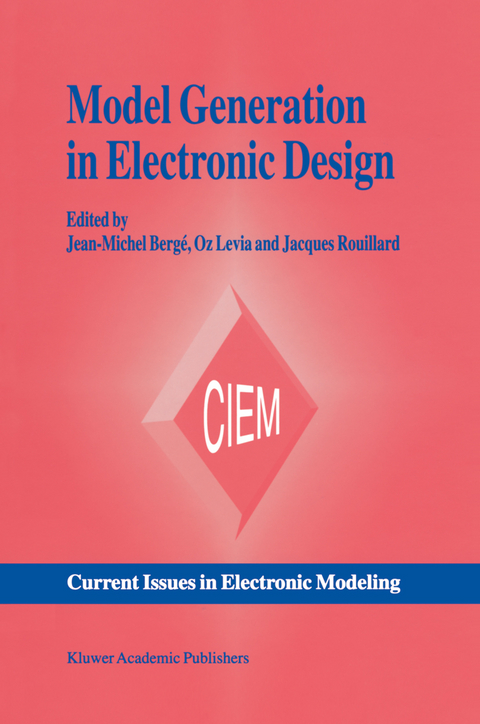
Model Generation in Electronic Design
Springer-Verlag New York Inc.
9781461359890 (ISBN)
Other chapters describe the development of thermal models for electronic devices, the development of a set of model packages for VHDL floating point operations, a techniques for model validation and verification, and a tool for model encryption.
Model Generation in Electronic Design is an essential update for users, vendors, model producers, technical managers, designers and researchers working in electronic design.
1. A Flexible Generator of Component Models.- 1.1. Introduction.- 1.2. G&D Generator.- 1.3. A Flexible Generator.- 1.4. Implementation of the Generator.- 1.5. Experimental Results.- 1.6. Conclusions and Future Work.- 2. What Makes an Asic Library Sign-Off.- 2.1. Introduction.- 2.2. Testing.- 2.3. Accuracy.- 2.4. Library Creation.- 2.5. Conclusion.- 3. A Case History in Building Vital-Compliant Models.- 3.1. Introduction: from VHDL to VITAL.- 3.2. Evolution of VITAL Specification.- 3.3. Simulation Performances.- 3.4. Conclusion and Future Work.- 4. Modeling Multiple Driver Net Delay in Simulation.- 4.1. Wire Delay.- 4.2. Wire Delay Modeling Alternatives.- 4.3. Modeling Wire Delay.- 4.4. Wire Delay Model Integration.- 4.5. Summary.- 5. Delphi: The Development of Libraries of Physical Models of Electronic Components for an Integrated Design Environment.- 5.1. Background.- 5.2. The DELPHI Project.- 5.3. Preliminary Investigations of compact models for Mono-Chip Packages.- 5.4. A Compact Model of a 208-Lead PQFP Package.- 5.5. Concluding Remarks.- 6. VHDL Floating Point Operations.- 6.1. Introduction.- 6.2. Framework for VHDL Code.- 6.3. Operations.- 6.4. Validation and Benchmarking.- 6.5. Package Usability.- 6.6. Conclusions.- 7. Symbolic Model Checking with Past and Future Temporal Modalities: Fundamentals and Algorithms.- 7.1. Introduction.- 7.2. Fundamentals.- 7.3. The Temporal Logic.- 7.4. Algorithms of the Symbolic Model Checker.- 7.5. Application to VHDL.- 7.6. Conclusion.- 8. Krypton: Portable, Non-Reversible Encryption for VHDL.- 8.1. Introduction.- 8.2. VHDL Source-Source Encryption.- 8.3. LVS: A Compilation Environment for VHDL-Based Applications.- 8.4. Running KRYPTON.- 8.5. Example.- 8.6. Conclusions and Perspectives.
| Reihe/Serie | Current Issues in Electronic Modeling ; 1 |
|---|---|
| Zusatzinfo | XVIII, 155 p. |
| Verlagsort | New York, NY |
| Sprache | englisch |
| Maße | 160 x 240 mm |
| Themenwelt | Informatik ► Weitere Themen ► CAD-Programme |
| Informatik ► Weitere Themen ► Hardware | |
| Technik ► Elektrotechnik / Energietechnik | |
| ISBN-13 | 9781461359890 / 9781461359890 |
| Zustand | Neuware |
| Informationen gemäß Produktsicherheitsverordnung (GPSR) | |
| Haben Sie eine Frage zum Produkt? |
aus dem Bereich


